Zöld Izrael » Események, Hírek, Kiemelt » Öt nap a zöld nanotechnológiáról – Five Days on Green Nanotechnology
Öt nap a zöld nanotechnológiáról – Five Days on Green Nanotechnology
2011 júniusában ötnapos konferenciát szervezett egy lelkes diákcsapat az izraeli Bar-Ilan
Egyetemen. A szakmai fórum résztvevői, közel harmincan, Németországból, Hollandiából,
Spanyolországból, Bulgáriából, Angliából és Magyarországról érkeztek a tel-avivi
felsőoktatási intézménybe.
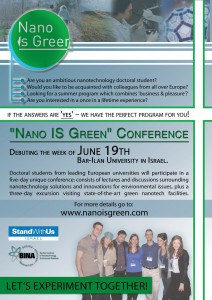
Az első két nap során előadások hangzottak el a rendezvénynek otthont adó BINA (Bar
Ilan Institute of Nanotechnology and Advanced Materials), a jeruzsálemi Héber Egyetem,
a Tel-Aviv Egyetem, a haifai Technion és a rehovoti Weizmann Intézet kutatóitól. A
neves professzorok által tartott prezentációkban közös volt, hogy a nanotechnológia
zöld területeiről, azaz a környezettudatos ágairól szóltak. A napenergia hasznosítása, az
energiatárolás, az újrahasznosítható és lebomló anyag kerültek terítékre.
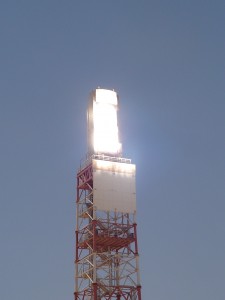
Arie Zaban (BINA) és Yossi Rosenwaks (Tel-Aviv Egyetem) a mai kor napelemeiről, Gitti
L. Frey (Technion) a szerves és szervetlen fotovoltaikus határfelületekről tartott bemutatót. A
környezetbarát energiatárolás és a nanotudományok kapcsolatát elemezte Yoel Sasson (Héber
Egyetem), Doron Aurbach (BINA), Yaakov Tichler (BINA) és Igor Lubomirsky (Weizmann
Intézet). Aharon Gedanken (BINA) az antibakteriális kórházi textíliák területén folytatott
kutatásainak eredményét vázolta.
A rendezvényt megtisztelte jelenlétével Daniel Hershkowitz professzor, Izrael állam kutatási
és technológiai minisztere. Beszédében hangsúlyozta: a tudomány nyelve közös lehet
valamennyi nemzet, vallás számára, ez köthet össze bennünket, s hozhatja el a békét a Közel-
Keletre is.
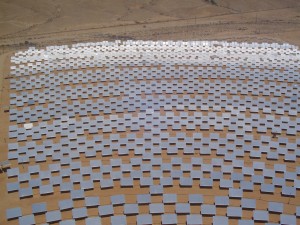
Az intenzív bevezető után a szentföldi nano-cégek nyomába eredtünk a hátralévő napokon.
Első állomásunk a dimónai atomerőmű szomszédságában működő Bright Source napenergiát
hasznosító telep volt. A munkavédelmi előírásoknak megfelelő védőöltözet felvétele után a
csapat testközelből nézhette meg a Negev-sivatagba kihelyezett hatalmas tükröket és azt a
tornyot, ahova a tükrök segítségével a nap sugarait összegyűjtik. A terület bejárása után Sde
Boker kibucba utaztunk, ahol a beer shevai Ben Gurion Egyetem kihelyezett napenergiai
kutatólaboratóriumát és látogató központját tekintettük meg. A település határában felkerestük
David Ben Gurion, Izrael első elnökének sírját is. A tudományok mellett akadt idő az ország
megismerésére. Az estét a Rimon-kráter mellet épült Mitzpe Ramon városában töltöttük. A
gyalogtúra és rappelling (a kráterbe kötélen történő leereszkedés) után a sivatagi éjszakában
a csillagokról hallhattunk előadást, majd szabad szemmel és teleszkóppal gyönyörködhettünk
az égbolt jelenségeiben.
Másnap a Holt-tenger partján az AHAVA kozmetikai cég laboratóriumában megtudhattuk,
hogyan járulhat hozzá a nanotechnológia a szépségipar fejlődéséhez. Érdekes volt látni
a turistaparadicsom közepén a fehér köpenyben dolgozó vegyészkollégákat. A világ
legmélyebb pontján lebegtünk a tenger felszínén, majd Jeruzsálem felé vettük az irányt. Az
éjszaka során az óvárosi Siratófal melletti alagút-hálózatban kalandozva tárult elénk a 3000
éves város történelme. Az időutazást a következő napon az Óváros különböző negyedeinek
meglátogatása tette még feledhetetlenebbé. A tel-avivi záróvacsora előtt ellátogattunk a Héber
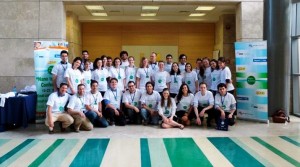
Egyetemre, ahol Israel Aumann Nobel-díjas közgazdász tartott előadást a nanotechnológia
szerepéről a világ fejlődésében és a közel-keleti békefolyamatokban.
Dr. Paszternák András
www.nanopaprika.eu
In June 2011 an enthusiastic team of students organized a five-day conference in Israel at the
Bar-Ilan University in Tel Aviv. The participants, almost 30 people came from a variety of
countries such as Germany, the Netherlands, Spain, Bulgaria, England and Hungary.
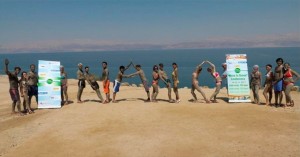
The first two days we had lectures at BINA (Bar Ilan Institute of Nanotechnology and
Advanced Materials), hosting the events of the conference held by famous professors from
Jerusalem’s Hebrew University, the Tel-Aviv University, the Haifa Technion and Rehovot
Weizmann Institute. Their presentations had the same main topic: they were all about the
green – that is environment-conscious – fields of nanotechnology, the utilization of solar
energy, energystoring, recyclability and decaying materials.
Arie Zaban (BINA) and Yossi Rosenwaks (Tel-Aviv University) outlined today’s solar
panels, Gitti L. Frey (Technion) talked of orgamic and inorganic photovoltaic borderline
surfaces. The relationship between environment-friendly energy-storing and nanosciences
was analized by Yoel Sasson (Hebrew University), Doron Aurbach (BINA), Yaakov Tichler
(BINA) and Igor Lubomirsky (Weizmann Institute). Aharon Gedanken (BINA) held a lecture
about the results of research made into antibacterial hospital textiles.
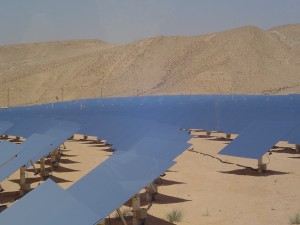
At this event professor Daniel Hershkowitz, Izrael’s research and technology minister was
also present. In his speech he emphasized that the language of science could be the lingua
franca for every nation and religion, this could associate us with everyone else and can bring
peace to the Near East as well.
After an intensive introduction we started out in the wake of nano-companies in the Holy
Land. Our first stop was the solar-energy using colony called Bright Source, right next to
the nuclear power station in Dimona. After putting on our safety wear we could view and go
very near to the enormous mirrors in the Negev Desert as well as the tower where the rays
of sunshine are focussed with the mirrors. After a tour of the area we travelled to Sde Boker
kibbutz where we visited the solar energy research laboratories and visitors’ centre of the
Been Gurion University (Beer Sheva). On the periphery of the settlement we also paid our
tribute at the grave of David Ben Gurion, the first president of Israel. Besides science we also
had time to get to know the country. The evening was spent in Mitzpe Rasmon town erected
next to the Rimon Crater. After a tour and rappelling (descending into the crater with cables)
we could listen to a lecture about the stars in the nightly desert, and could enjoy the fantastic
phenomena of the sky with naked eyes and a telescope.
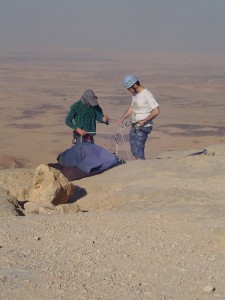
The next day we visited the laboratory of the AHAVA cosmetics firm on the shore of the
Dead Sea where we got to know how nanotechnology could make its contribution to the
development of the beauty industry. It was interesting to see chemists working in white
uniforms right in the middle of a tourist paradise. We floated on the surface of the sea right
above the deepest point on Planet Earth, then started out in the direction of Jerusalem. During
the night we wandered in the maze of tunnels next to the Wailing Wall revealing the 3,000
xears history of the city. The journey in time was made even more memorable by our visit
to the various districts of the Old Town. Before our last supper we paid a visit to the Hebrew
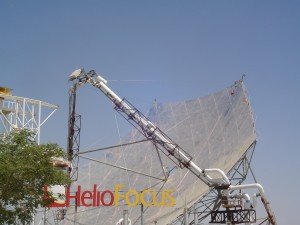
University where Israel Aumann, the Nobel-prized economist held a lecture on the role of
nanotechnology in the development of the world and the peace procedures in the Near East.
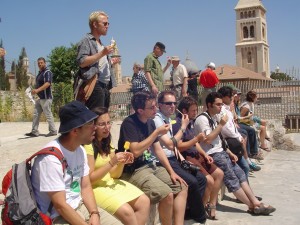
Dr. András Paszternák
www.nanopaprika.eu
Kategória: Események, Hírek, Kiemelt · Cimkék: Israel, Izrael, nano, program, tchnológia, techonogy







